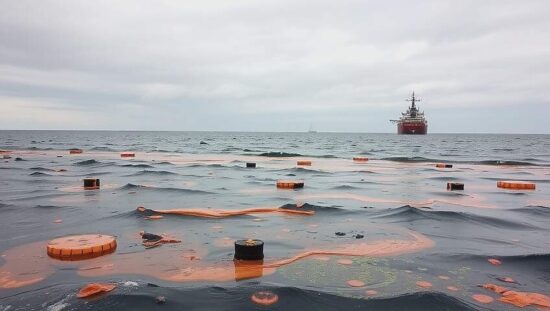The maritime incident involving two oil tankers in the Black Sea off the Russian coast appears to have caused more extensive damage than initially acknowledged by Russian authorities. Reports indicate that approximately seven months after the disaster, toxic oil clumps continue to wash ashore. Significant quantities of oil, estimated to be thousands of liters, remain trapped within the sunken vessel wreckage and have yet to be recovered.
Further investigation suggests the declared cargo may not be entirely accurate. Evidence points to the possibility that the tankers were carrying heavier and more persistent grades of fuel oil, potentially more toxic than the comparatively light M-100 heavy oil initially reported. Crucially, the results of roughly 8,000 samples taken by the Russian consumer protection agency concerning the washed-up oil have not been publicly released.
Analysis of the tankers’ routes indicates that at least one of the vessels – deemed unsuitable for deep sea navigation – may have loaded particularly harmful fuel oil in Rostov-on-Don. Inquiries around a nearby refinery corroborate this possibility.
Speculation has arisen suggesting the tankers may have been covertly transporting cargo destined for a larger vessel within Russia’s shadow fleet. This fleet is known to handle the global shipment of unprocessed Russian heavy oil, often with the intention of concealing its origin.
The oil tankers, both over 50 years old, encountered severe weather conditions in the Kerch Strait between the Russian mainland and the Crimean Peninsula, a region annexed by Moscow, in mid-December. The “Volgoneft 212” sustained a hull breach, leading to its fragmentation and submersion. The second tanker, the “Volgoneft 239” similarly broke apart, with its stern running aground just 50 meters from the coast.
Responding to the oil spill, Russian authorities have removed over 170,000 tons of contaminated sand from the affected region of the Black Sea and have closed approximately 150 beaches. However, local residents report continued bathing on these shores, fueling concerns that the public is not adequately informed about the dangers and composition of the persistent oil residues. Environmental groups allege a lack of transparency regarding the full scope of the environmental risks.





